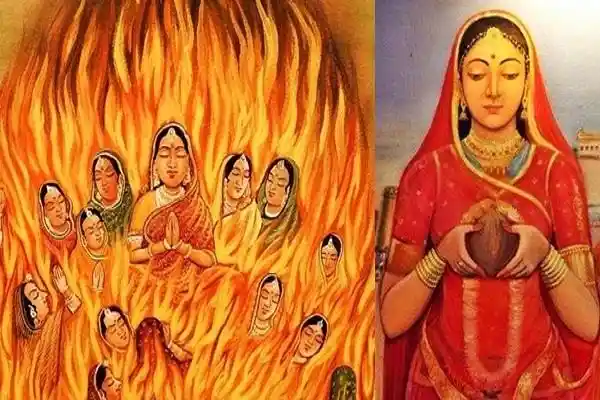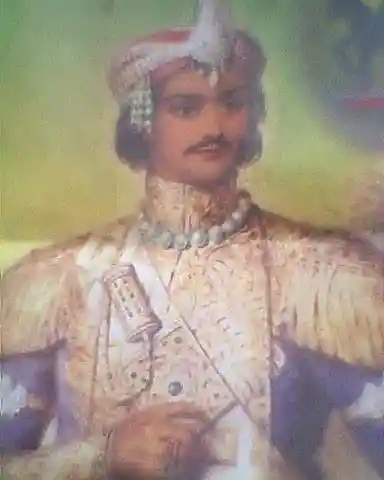Kanhadade Prabandha – The Final Battle
As Alauddin Khilji’s army prepares for its attack on Jalore, a conspiracy seems to be unfolding in Kanhadade’s kingdom. A case of betrayal takes place and the enemy finds an unexpected ally in Jalore. Will this be the end of Jalore? Let’s find out.

Kanhadade Prabandha by Padmanava, translated by V.S Bhatnagar. Image Source: Goodreads
The Rajputs of medieval times were known for their commitment to loyalty, honour and valor. They would rather choose death than cower in front of the enemy. But sadly, there were a few people who did not uphold these values. Such is the case of one such Rajput, whose betrayal had heavy implications on the Battle of Jalore.
Here, we need to rewind a bit to our previous stories. Remember Sih Malik, one of the generals of Ulugh Khan, who was captured during Kanhadade’s first battle? Sih Malik was released amidst the Firuza- Viramde drama as a truce gesture. Sih Malik, however, was keeping himself busy even while he was being held as a prisoner.
He had made an alliance with one of the Sejaval (guard), Vika, who promised to reveal the secret of the fort and lead the Turks into the Jalore fort.
In return, he wished for a farman (legal agreement) from Alauddin Khilji, giving him the right to rule Jalore after it falls into the hands of the sultanate. (During those times, since it was difficult to control the regions farther from the seat of power, the Delhi sultans often allowed the locals to rule provided they accepted the sovereignty of the Sultana and offered regular tributes and other resources whenever required.)
Sih Malik agreed to the proposal. He also rewarded Vika with jewels and fine robes as a confirmation of their alliance.
Later that night, Vika led the Turkish army into the fort through the secret entryway. He ran to his wife, Hira Devi and broke in the news with excitement. However, Hira Devi was horrified at her husband’s actions. She called him a betrayer and cursed him for unleashing hell on his own people. Hira Devi was so enraged that she struck her husband with whatever weapon she could find which immediately killed Vika. As she spotted the enemy troops enter the fort through the way her husband had directed, she rushed to Kanhadade and fell on his knees.
Hira Devi cried,
“Oh dear Lord! Please pay heed to me. My husband has betrayed the fort!”
Hira Devi in this case, displayed all the essential qualities of the Rajputs, even when Vika did not.
Padmanava mentions a list of the names of all those who stayed by Kanhadade’s side until the last moments of battle. He also mentioned the ones who ran away, adding that they would not be rewarded in heaven.
Finally, Kanhadade too fell in battle and is believed to have returned to his eternal abode.
Surprisingly, Padmanava does not glorify Kanhadade’s death in a way a hero’s death is usually glorified in a story. There was no description of his final moments either. This is one of the many things that keep the readers engaged in the plot of Kanhadade Prabandha. This makes the readers wonder, ‘Could there be more to this story?’. Indeed, there is.
We now shift our focus to Kanhadade’s son, Viramde. After the death of his father, the brave Viramde immediately took up leadership and became the ruler of Jalore. He, however, could rule for only three days. Soon, even Viramde was killed in the ongoing battle and his wives committed Jauhar. Padmanava drew quite a picture to show how Viramde spent his final moments. Viramde refused to be captured alive by the enemy and even wounded himself to ensure that he would die in the end. He was slashed with multiple sword cuts before the life drained out of his eyes.
As the sultanate army entered the fort, Kanhadade’s soldiers prepared for battle. With Rajput blood bursting in their veins, they charged at the Turks, killing many in the process. All through the night until midday, the fort walls rang with the sounds of weapons clashing and soldiers screaming. Few of the soldiers retreated back to the palace while others gave up their lives fighting.
But it eventually became clearer that Jalore was falling into the hands of the Turks. There was no way out.
The women inside the fort prepared for their own battle. Dressed in finery, they sought the blessings of the Brahmin and their husbands and lit a big fire. With the promise to reunite with their husbands in heaven, the women committed Jauhar by burning themselves.
The act of Jauhar was considered to be a holy ritual and although we as present-day readers, may find it horrifying, Padmanava sure painted a rosy picture. According to Padmanava, about fifteen hundred and eighty-four Jauhar fires were lit all over Jalore!
When Firuza, Alauddin Khilji’s daughter learned of his death, she ordered the soldiers to bring back Viramde’s head on a bed of scented flowers. When Viramde’s head was presented to her, she exclaimed,
“Now you have to break your vow and look at my face”
But a true Rajput keeps his vow even in death! Viramde’s head somehow fell to the side, away from Firuza! Despite her grudge against Viramde, Firuza however, decided that she would fulfill her duty and commit sati since she was his Rajput wife her past six lives.
Padmanava’s Kanhadade Prabandha hence narrated an engaging tale about the lives of regional rulers during the sultanate period, with specific emphasis on the Chahmanas of Jalore. Through themes of betrayal, revenge, love and Rajput values of courage and honour, Kanhadade Prabandha takes us to the medieval period and tells us a lesser-heard tale in history. Despite its exaggerations and biases, this text remains a crucial source for understanding medieval regional history –the socio-cultural practises of the time like sati and jauhar and the values that the Rajputs upheld.
Let us as readers and lovers of Indian history, remember this tale and remember the writer who enhanced our understanding of history through his wonderful narrative.

Ruins of the Jalore Fort, Rajasthan. Image Source: Native Planet

The Rajput women at Jalore committed Jauhar during the Battle; Image Source: Roar

Viramde, Kanhadade’s son ruled Jalore only for three days; Image Source: Blogspot


